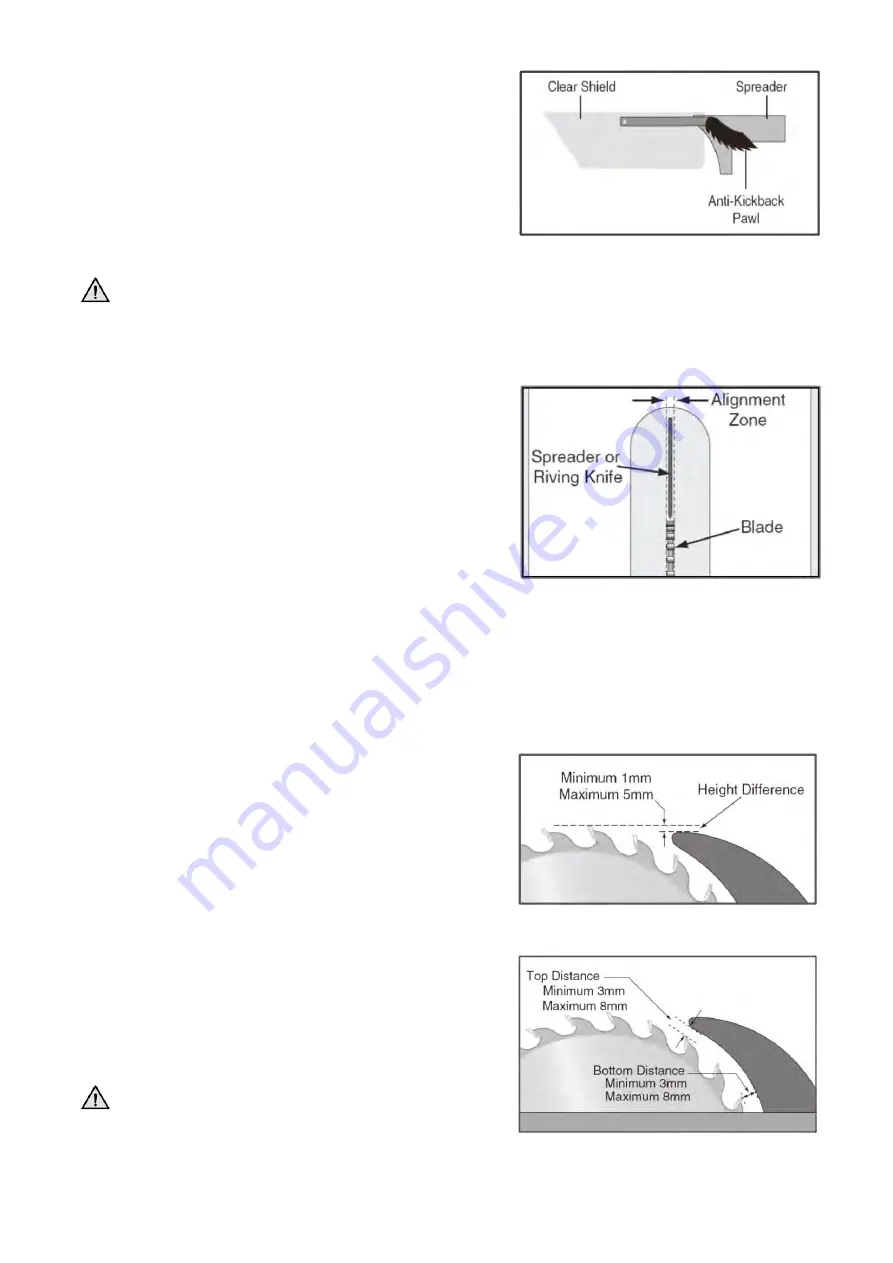
-
22
-
Please Save This Manual For Future Reference
The guard encloses the top of the blade to reduce the risk of
accidental blade contact and contain flying chips or dust.
The guard is designed to lift as the workpiece is pushed into
the blade, remain in contact with the workpiece during the
cut, then return to a resting position against the table when
the cut is complete.
Blade Guard
refers to the assembly that consists of the
guard, spreader, and anti-kickback pawls (see Figure 18)
WARNING
:
To ensure that the guard does its job
effectively, it MUST be installed and adjusted so that it
moves up and down properly to accommodate workpieces
and maintain coverage over the blade.
Spreader & Riving Knife
The Spreader is a metal plate that prevents the freshly cut
pieces of the workpiece from pinching the backside of the
blade and causing a kickback. It also acts as a barrier
behind the blade to shield hands from being pulled into the
blade if a kick-back occurs.
Place a straightedge against the
blade and the spreader. When properly aligned, the
spreader/riving knife will be in the "Alignment Zone," shown
in Figure 19, and will be parallel with the blade.
The Riving Knife works the same way as the spreader on
the blade guard assembly. It is a metal plate that prevents
the newly cut workpiece from pinching the backside of the
blade and causing kickback.
The key difference between the
spreader and the riving knife is that the riving knife mounts
below the blade's highest point of rotation, as shown in
Figure 20
The height difference between the riving knife and the blade
allows the workpiece to pass over the blade during
non-through cuts (those in which the blade does not cut all
the way through the thickness of the workpiece).The riving
knife acts as a barrier behind the blade to reduce the risk of
hands being pulled into the blade if a kickback occurs. The
riving knife must be kept within the range shown in Figure
21. For that reason, we only recommend using a 10" blade
for operations that require use of the riving knife.
WARNING
:
To ensure that the riving knife works
safely, it MUST be aligned with and correctly adjusted to the
blade.
Figure 18. Blade Guard Assembly Components
Figure 19:
Spreader/Riving Knife Alignment
Zone
Figure 20:
Height Difference Between Riving
Knife And Blade
Figure 21:
Allowable Top And Bottom Distances
Between Riving Knife And Blade






























